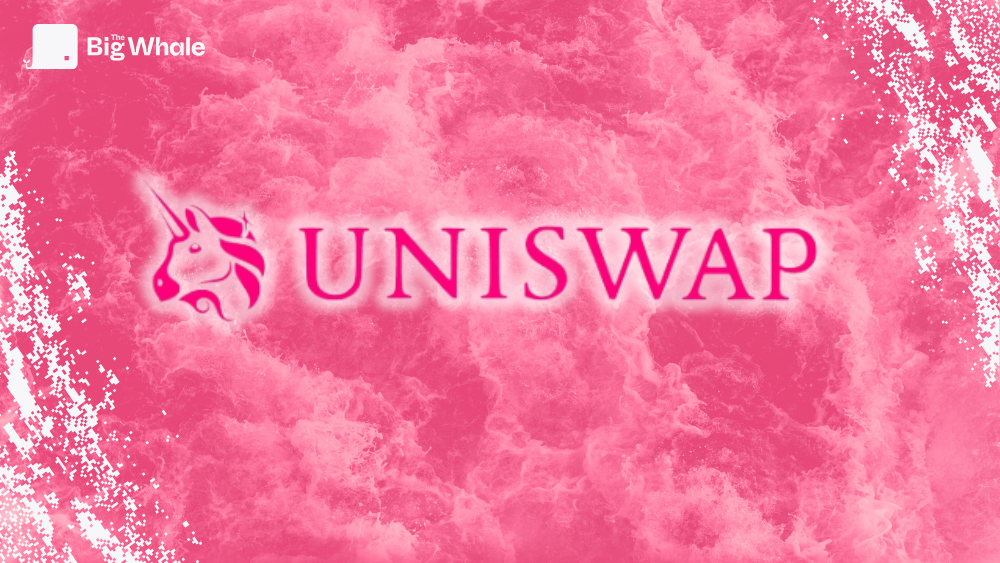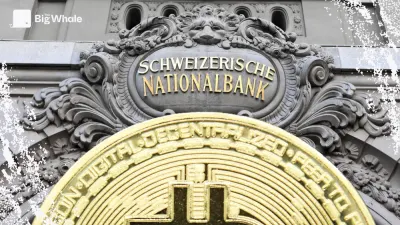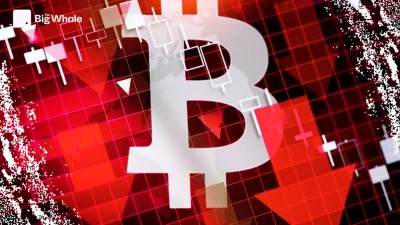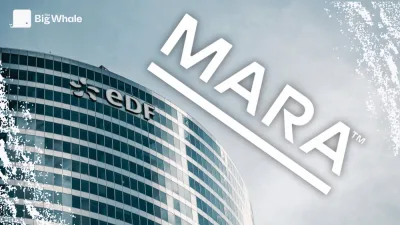TBW - Uniswap v4: Understanding the new version and its implications

Uniswap, the leading decentralised exchange platform, has evolved gradually since its inception. V1 was limited to exchanges between ETHs and a single ERC20 token via a constant-product AMM model. v2 enhanced functionality by allowing direct exchanges between tokens and introducing flash swaps, thereby diversifying liquidity options. As for v3, it marked a major innovation with its concentrated liquidity and multiple fee levels, optimising both the efficiency of liquidity providers and trading conditions for traders.
What's new in V4?
V4 retains the benefits of v3 while introducing major new features, including the "Singleton" architecture and "hooks", which make the protocol more flexible and customisable.
Here are the 5 main new features of Uniswap v4:
1- Customisable hooks: unprecedented flexibility
The hooks in Uniswap v4 allow complete customisation of interactions between pools, swaps, fees and LP positions. Each pool can incorporate a "hook", a programmable contract that triggers specific actions at different stages of a transaction.
Examples:
- A USDC/DAI stablecoin pool can use a hook to automatically adjust swap fees according to market volatility.
- A DeFi project can implement a hook to redirect part of the swap fees to a community fund or offer benefits to loyal users.
2 - Singleton architecture: reduced costs and greater efficiency
Uniswap V4 adopts a singleton architecture where a single contract manages all liquidity pools, unlike previous versions which required a separate contract per pool. This approach reduces pool creation costs and optimises multi-hop swaps (exchanges passing through several intermediate pools to obtain a better rate).
Examples:
- A project launching a new token (e.g. XTOK) can create an XTOK/ETH pool without deploying an expensive contract.
3 - Flash Accounting: complex transactions at lower cost
The singleton architecture introduces Flash Accounting, which optimises complex transactions and reduces gas costs for multi-pool exchanges. This feature eliminates intermediate fees between liquidity pools and facilitates the integration of Uniswap v4 into sophisticated applications, such as advanced trading strategies or connections with other protocols.
.png)
Examples:
- A trader can exchange token A for token C via two intermediary pools (A/ETH and ETH/C) in a single transaction, with no intermediary fees, thanks to flash accounting.
4 - Native ETH support: a better user experience
Uniswap V4 reintroduces native ETH support, eliminating the need to convert to WETH. This enhancement simplifies the use of DEX and reduces gas costs associated with wrapping/unwrapping.
5 - Custom Accounting: new possibilities for pool management
With Custom Accounting, Uniswap V4 allows traditional concentrated liquidity models to be extended or modified. The singleton contract serves as a universal settlement layer for different types of pools and strategies.
Examples:
- A pool can incorporate a hook applying withdrawal charges to discourage opportunistic behaviour.
Uniswap v4 significantly optimises costs thanks to its Singleton architecture and flash accounting. The platform becomes more economical, both for swaps and for creating pools. Customisable hooks give developers greater flexibility, enabling the addition of features such as limit orders and dynamic fees. Native ETH support eliminates unnecessary conversions, further reducing costs.
>> Read also - Uniswap, Aave, Sky: What strategies for the "OGs of the DeFi"?
What is Uniswap's weighting among DEX?
Uniswap maintains a dominant position in the universe of decentralised exchanges (DEX). On Ethereum, it remains the undisputed DEX in terms of volume and liquidity. However, in the global multichain ecosystem, its supremacy is no longer absolute.
.png)
With the rise of Solana, activity in DEXs like Raydium has exploded. Over the past 30 days, Raydium has surpassed Uniswap in trading volume for the second time in a full month - the first occurrence dating back to November 2024. This performance was primarily driven by the memecoin craze, particularly the $TRUMP and $MELANIA tokens in January, which generated significant volumes to Raydium's benefit.
.png)
While Uniswap retains its dominance of EVM networks, competition is intensifying with the emergence of other ecosystems such as Solana, which are attracting increasing trading volumes. While Uniswap no longer consistently occupies the top spot in terms of volume, it maintains its position in the top 3.
>> Read also - DeFi: can Uniswap continue to dominate the market?
Do the new features in Uniswap v4 make the UNI token more useful?
While Uniswap v4 improves the efficiency of DEX, this update does not transform the UNI token into an asset essential to the operation of the protocol, as it does not add any new direct utility to the token.
However, if governance activates the "fee switch" or other value capture mechanisms, UNI could become a direct revenue-generating token for its holders, giving a new economic dimension to its role.
For the time being, UNI remains essentially a governance token, with no direct economic function in the protocol. Nevertheless, Uniswap V4's improvements, notably the flexibility of transaction fees, could encourage future developments.
What's the status of the Unichain project?
Unichain is an Ethereum layer 2 solution, developed by Uniswap Labs and designed as a central hub for inter-chain liquidity. Built on the OP stack, it aims to offer instant transactions with initial blocking times of one second, which will eventually be reduced to 250 milliseconds.
Since its launch on the Sepolia testnet in October 2024, Unichain has demonstrated impressive performance: more than 90 million test transactions processed, more than 13.3 million test contracts deployed, and availability in excess of 99% for all critical services.
The launch of the public mainnet is scheduled for early 2025. It will incorporate Permissionless Fault Proofs from day one, which were enabled on 8 January 2025 on the Sepolia testnet during planned maintenance. These proofs will allow everyone to verify the chain's activity.
Unichain's major innovation lies in its revenue redistribution model. While most layer 2 solutions are limited to a simple governance token, Uniswap sets itself apart by allocating 65% of Unichain's net revenues to the validators and stakers in the Unichain Validation Network (UVN). This reward recognises their contribution to securing the network. To become a validator, all you need to do is stake UNI tokens on the Ethereum network.
In the coming months, a test version of the UVN will be deployed on Unichain's test network to evaluate its stability and performance. Its official launch will follow once the tests have been validated. This innovative business model not only reinforces the usefulness of the $UNI token, but also redefines market standards.
What about its business model?
The Uniswap business model is built around several elements. Firstly, Uniswap Labs (not the Uniswap protocol itself) captures a fixed fee of 0.25% when you make a swap via its interface (Uniswap.org or its wallet). This fee is used to fund the company's operations and is separate from the Uniswap protocol fee.
.png)
Introduced at the end of 2023 with an initial rate of 0.15%, these fees were increased to 0.25% in April 2024, a rate that remains in force to this day. This increase has consolidated their position as a major source of revenue for Uniswap Labs.
The graph above illustrates the significant increase in fees collected since they were introduced, with a marked increase following the April 2024 review.
In total, Uniswap Labs has collected over $10 million in fees since their activation [(real-time data here).](https://dune.com/kroeger0x/uniswap-labs-fees)
.png)
The Uniswap protocol generates trading fees via liquidity providers (LPs), with significant changes in v4.
The main change concerns hooks, customisable modules that allow dynamic management of fees.
In contrast to previous versions where charges were fixed (0.05%, 0.30%, or 1% in v3), v4's hooks allow:
- Real-time variation based on volatility, trading volume and other market indicators
- Adjustments at different intervals: per swap, per block, per transaction, or even annually
- Total flexibility in rates (4.9 beeps, 10 beeps, etc.)
This flexibility represents a significant advance on previous static fees, optimising operations for both liquidity providers and traders.
To date, the "fee switch" has not been activated, which means that the protocol (and not the Uniswap Labs company) does not generate any direct revenue. 100% of swap fees are currently collected by liquidity providers (LPs).
The business model focuses on incentivising liquidity providers, while Uniswap Labs funds its operations through other means. The protocol has a potential revenue mechanism, the activation of which remains subject to EU decisions.
In a regulatory environment that could become more flexible in the crypto industry, particularly in the US, Uniswap's economics could undergo major transformations in the coming months.
What is the state of governance of the Uniswap protocol?
Uniswap remains a highly centralized governance system today. Unlike a traditional democratic system where each vote carries equal weight, Uniswap's governance is dominated by those who hold the most tokens. In practice, this means the largest token holders decide the outcome of votes, limiting the influence of other participants.
A striking example is the repeated rejection over the past 3 years of the proposal to activate the "fee switch" (the mechanism that would allow revenue distribution to UNI token holders). The latest decision was heavily influenced by the wallets of the main entities controlling governance, such as American venture capital fund a16z and Uniswap founder Hayden Adams, who cited regulatory risks to justify their opposition.
This is not the first time a16z has used its influence to sway a vote in its favor. In February 2023, the fund single-handedly tipped a decision regarding the integration of BNB Chain on Uniswap. Rather than supporting the proposal, a16z blocked it because it integrated a competing bridge (Wormhole) instead of LayerZero, in which they had invested, raising questions about potential conflicts of interest within the protocol's governance.
In late 2024, Uniswap Labs launched Unichain without consulting the DAO, triggering sharp criticism within the community. Billy Gao, head of governance at Stanford University's blockchain club, who is one of Uniswap DAO's largest delegates, specifically denounced this lack of transparency. This decision was seen as a denial of the DAO's role and further evidence that key decisions are made behind closed doors by Uniswap, rather than by the community.
This episode once again raises questions about the true degree of decentralization in Uniswap's governance and the real influence of token holders on strategic decisions. The promise of participatory governance seems far off as long as power remains concentrated in the hands of a few dominant players. This Bubblemaps chart perfectly illustrates this: fewer than 10 clusters share nearly 20% of the total UNI supply.
.png)



